Castles
 Formerly known as the Transylvanian Versailles, the Bánffy Castle from Bonțida was gradually built from the XVIth century and won its final form in the middle of the XIXth century. Today, the property is administrated by the Transylvania Trust Foundation. The castle can be visited on a permanent basis; an Art Café and accommodation sites are already functioning on the estate, educational, cultural and community functions are also performed.
Formerly known as the Transylvanian Versailles, the Bánffy Castle from Bonțida was gradually built from the XVIth century and won its final form in the middle of the XIXth century. Today, the property is administrated by the Transylvania Trust Foundation. The castle can be visited on a permanent basis; an Art Café and accommodation sites are already functioning on the estate, educational, cultural and community functions are also performed.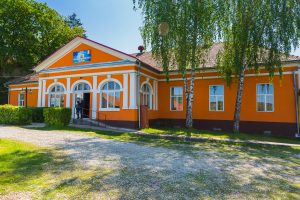 The estate was regained by its rightful owner, Gabriella Bánffy in 2014. However, the actual handover of the property hasn't happened yet. The manor currently hosts the Town Hall and the local Post Office.
The estate was regained by its rightful owner, Gabriella Bánffy in 2014. However, the actual handover of the property hasn't happened yet. The manor currently hosts the Town Hall and the local Post Office. The Bánffy family owns an estate of approximately 50 hectares in Ciuguzel. The estate includes a Baroque-style manor house, a recently renovated old house, the garden and forests. The manor house is in good condition, however it necessitates serious renovation work. Its roof and walls are intact as the building was used a school for several years. The estate was returned to the Bánffy family, and after its renovation the family plans to use it for family events.
The Bánffy family owns an estate of approximately 50 hectares in Ciuguzel. The estate includes a Baroque-style manor house, a recently renovated old house, the garden and forests. The manor house is in good condition, however it necessitates serious renovation work. Its roof and walls are intact as the building was used a school for several years. The estate was returned to the Bánffy family, and after its renovation the family plans to use it for family events.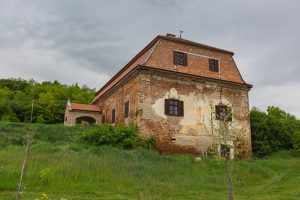 The manor house is the property of dr. Sándor Barabássy. At the moment, the restoration works are almost finished, some of the manor's rooms are already furnished, and they are open for visitors and ready to host smaller family/company events. In the near future, the manor house is going to be used by the Barabássy family, but it will be open for cultural events too.
The manor house is the property of dr. Sándor Barabássy. At the moment, the restoration works are almost finished, some of the manor's rooms are already furnished, and they are open for visitors and ready to host smaller family/company events. In the near future, the manor house is going to be used by the Barabássy family, but it will be open for cultural events too. Currently, the Bethlen János Manor is under renovation, but it can be visited upon request. The garden of the manor is suitable for outdoor cultural events.
Currently, the Bethlen János Manor is under renovation, but it can be visited upon request. The garden of the manor is suitable for outdoor cultural events.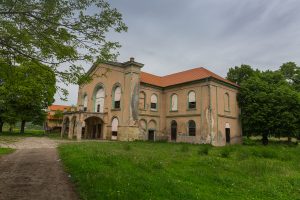 In 2008, Fruzsina Bethlen, daughter of Ádám Bethlen managed to reclaim the property. Soon after, she donated the estate to the Prostestant Church in Bahnea. In 2011, the castle received new roof. Currently the castle stands empty, it is in a semi-ruined state. The castle's garden is suitable for hosting events.
In 2008, Fruzsina Bethlen, daughter of Ádám Bethlen managed to reclaim the property. Soon after, she donated the estate to the Prostestant Church in Bahnea. In 2011, the castle received new roof. Currently the castle stands empty, it is in a semi-ruined state. The castle's garden is suitable for hosting events. Today this fantastic monument building and its peaceful surroundings host a modern, luxury hotel. Each room has its original design based on a specific theme - some of them are decorated by the original Renaissance mural paintings, antique furniture and fireplaces. The style of the hotel combines perfectly the atmosphere of old, noble times with the latest interior design trends that assure its elegance and comfort. The castle hotel provides an excellent location for relaxation and active recreation for the entire family.
Today this fantastic monument building and its peaceful surroundings host a modern, luxury hotel. Each room has its original design based on a specific theme - some of them are decorated by the original Renaissance mural paintings, antique furniture and fireplaces. The style of the hotel combines perfectly the atmosphere of old, noble times with the latest interior design trends that assure its elegance and comfort. The castle hotel provides an excellent location for relaxation and active recreation for the entire family. Daniel Castle from Vârghiș together with its beautiful dendrological park is one of the most well-known monument buildings in the region of Baraolt. The castle park hosts rare tree and shrub species. The castle building, defined by its late Renaissance sculptures, Baroque ornaments and Classicist extensions, is unique in Transilvania, thus it has been popular not only among art historians but also among tourists. The castle can be visited upon request.
Daniel Castle from Vârghiș together with its beautiful dendrological park is one of the most well-known monument buildings in the region of Baraolt. The castle park hosts rare tree and shrub species. The castle building, defined by its late Renaissance sculptures, Baroque ornaments and Classicist extensions, is unique in Transilvania, thus it has been popular not only among art historians but also among tourists. The castle can be visited upon request. Until the autumn of 2006, the castle building hosted the local Primary School, which after the restitution process ended, the school has moved into another building. The owner, baron Pál Degenfeld, granted the concession for operating the estate for 39 years to the regional Protestant Church.
Until the autumn of 2006, the castle building hosted the local Primary School, which after the restitution process ended, the school has moved into another building. The owner, baron Pál Degenfeld, granted the concession for operating the estate for 39 years to the regional Protestant Church.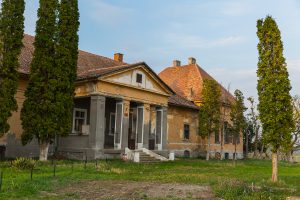 Cuci Castle was built at the initiative of Count Degenfeld Miksa Kristóf. Subsequently, the building was extended with two wings by Degenfeld Lajos in the 20th century. In the past, the building was surrounded by a beautiful dendrological park and had two greenhouses. Recently, the castle was returned to the Degenfeld family. The estate is in good condition, but it does not have a funtion yet.
Cuci Castle was built at the initiative of Count Degenfeld Miksa Kristóf. Subsequently, the building was extended with two wings by Degenfeld Lajos in the 20th century. In the past, the building was surrounded by a beautiful dendrological park and had two greenhouses. Recently, the castle was returned to the Degenfeld family. The estate is in good condition, but it does not have a funtion yet. The Gaál Manor, considered the jewel of Dalnic, is located at the foot of a hill, in wonderful natural surroundings. The two-story manor house was built in 1844, and it has been recently renovated. Today it hosts a modern, elegant guest house in two buildings. All together, there are eleven rooms, bathrooms, kitchen, dining room, sauna, gym etc. available for guests.
The Gaál Manor, considered the jewel of Dalnic, is located at the foot of a hill, in wonderful natural surroundings. The two-story manor house was built in 1844, and it has been recently renovated. Today it hosts a modern, elegant guest house in two buildings. All together, there are eleven rooms, bathrooms, kitchen, dining room, sauna, gym etc. available for guests.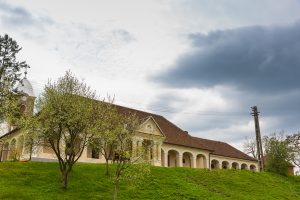 The impressive manor house built most probably in the 18th century, is located in the vicinity of the local Protestant Church. After the nationalization, the manor hosted several state institutions, which let the building to deteriorate. Currently, the manor house is under renovation.
The impressive manor house built most probably in the 18th century, is located in the vicinity of the local Protestant Church. After the nationalization, the manor hosted several state institutions, which let the building to deteriorate. Currently, the manor house is under renovation. Currently, the castle is in a semi-ruinous condition, thus it is not open for visitors. The estate has been purchased by István Nagy, a businessman from Miercurea Ciuc, and he plans to renotave the castle in the near future.
Currently, the castle is in a semi-ruinous condition, thus it is not open for visitors. The estate has been purchased by István Nagy, a businessman from Miercurea Ciuc, and he plans to renotave the castle in the near future.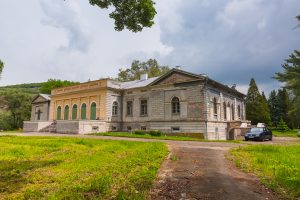 The Gyulay Castle from Mintia in the largest Classicist-style castle in Transylvania. It is located at only 5 km from Deva city, in the middle of a beautiful 5-hectares park. In the castle park there are several 300-years-old oak and plane trees, which surround the imposing castle building. The castle has been almost totally renovated and its ground floor serves as home to the owners, the Horváth-Tholdi family, while at the first floor there are several guest rooms. The castle is open for visitors and guests.
The Gyulay Castle from Mintia in the largest Classicist-style castle in Transylvania. It is located at only 5 km from Deva city, in the middle of a beautiful 5-hectares park. In the castle park there are several 300-years-old oak and plane trees, which surround the imposing castle building. The castle has been almost totally renovated and its ground floor serves as home to the owners, the Horváth-Tholdi family, while at the first floor there are several guest rooms. The castle is open for visitors and guests.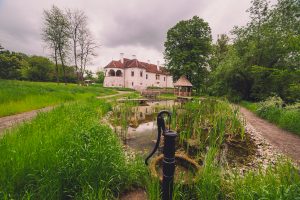 The beautifully restored castle functions as a museum. Visitors can find bedrooms and salons furnished according to the 19th-century style. In three rooms they can observe characteristics of the 17th and 19th century lifestyles and in the bastion's ground floor they can see panels containing the history and the renovation works of the castle, as well as archaeological findings. There is a café and wine cellar in the basement of the castle, where the atmosphere is enhanced by the reconstruction of an 18th century kitchen.
The beautifully restored castle functions as a museum. Visitors can find bedrooms and salons furnished according to the 19th-century style. In three rooms they can observe characteristics of the 17th and 19th century lifestyles and in the bastion's ground floor they can see panels containing the history and the renovation works of the castle, as well as archaeological findings. There is a café and wine cellar in the basement of the castle, where the atmosphere is enhanced by the reconstruction of an 18th century kitchen.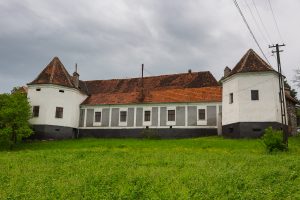 The Renaissance-style castle with a polygonal ground plan and with two towers at its sides, was built on the remains of a former monastery. Its current form has been gained after several renovations. The most famous owner of the castle was Kata Bethlen, the spirited writer and the generous advocate of sciences, who used a lot of her fortune for charity. Today, the castle is the home of the Ugrai family (the owner of the castle), but can be visited upon request.
The Renaissance-style castle with a polygonal ground plan and with two towers at its sides, was built on the remains of a former monastery. Its current form has been gained after several renovations. The most famous owner of the castle was Kata Bethlen, the spirited writer and the generous advocate of sciences, who used a lot of her fortune for charity. Today, the castle is the home of the Ugrai family (the owner of the castle), but can be visited upon request.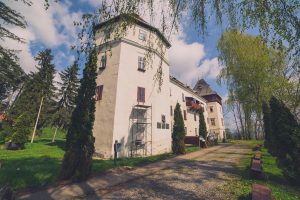 The castle from Brâncovenești is most famous for its role in the Transylvanian literary world from the beginning of the 20th century. It was in the garden of this beautiful castle, where baron János Kemény together with the most famous writers and poets of the time, founded the well-known literary community from Transylvania called Helikon in 1926. The castle is open for visitors daily between 10:00 – 18:00. Upon request, the owners of the castle offer guidance in several languages.
The castle from Brâncovenești is most famous for its role in the Transylvanian literary world from the beginning of the 20th century. It was in the garden of this beautiful castle, where baron János Kemény together with the most famous writers and poets of the time, founded the well-known literary community from Transylvania called Helikon in 1926. The castle is open for visitors daily between 10:00 – 18:00. Upon request, the owners of the castle offer guidance in several languages. Countess Gabriella Kornis regained the estate in 2006, her descendants own the castle today. The Classicist style new castle building together with the eastern tower are in semi-ruinous condition, they necessitate renovation and reconstruction work. The castle garden is used by the local school.
Countess Gabriella Kornis regained the estate in 2006, her descendants own the castle today. The Classicist style new castle building together with the eastern tower are in semi-ruinous condition, they necessitate renovation and reconstruction work. The castle garden is used by the local school.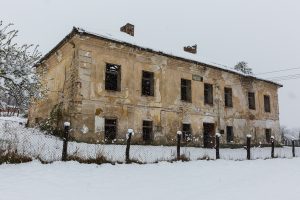 At the moment, the manor house is empty and it is in danger of collapse, but its garden is open for community and cultural events. During the last years, the garden has hosted various events during the Village Days, as well as the opening ceremony of the neighboring school.
At the moment, the manor house is empty and it is in danger of collapse, but its garden is open for community and cultural events. During the last years, the garden has hosted various events during the Village Days, as well as the opening ceremony of the neighboring school.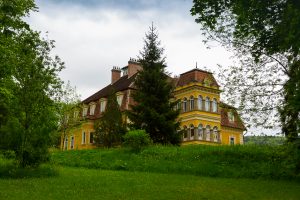 The Mikes estate from Zăbala consisting of the elegant castle building - which serves as home to the Roy Chowdhury-Mikes family -, the amazing English park with several lakes, symmetrical allies and the beautifully restored outbuildings which function as guest houses today, are open for visitors and overnight guests. Moreover, there are specially equipped restaurants and entertainment rooms suitable for hosting wedding ceremonies, conferences, parties etc.
The Mikes estate from Zăbala consisting of the elegant castle building - which serves as home to the Roy Chowdhury-Mikes family -, the amazing English park with several lakes, symmetrical allies and the beautifully restored outbuildings which function as guest houses today, are open for visitors and overnight guests. Moreover, there are specially equipped restaurants and entertainment rooms suitable for hosting wedding ceremonies, conferences, parties etc. The Castle of Gilău, along with the Castle of Gherla, is one of the earliest castles with rectangular plan in Transylvania. The castle is under renovation, but the castle's garden is open to visitors at some events (e.g. the "Várkert" (Castle's Garden) Festival, The Hungarian Day of the Transilvania Film Festival etc.).
The Castle of Gilău, along with the Castle of Gherla, is one of the earliest castles with rectangular plan in Transylvania. The castle is under renovation, but the castle's garden is open to visitors at some events (e.g. the "Várkert" (Castle's Garden) Festival, The Hungarian Day of the Transilvania Film Festival etc.).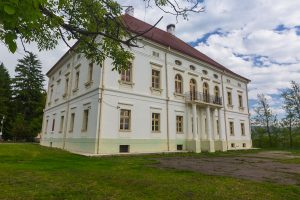 On the ground floor of the recently renovated castle, there are the offices of the National Touristic Information and Promotion Center, and on the first floor, there are exhibition rooms. At the moment, there are photo and mock-up exhibitions of Transylvanian castles, and a separate exhibition room commemorating the flooded village during Communism, Bezidu Nou. In the future, the building will host a museum dedicated to the memory of Clauda Rhédey, and in the basement, a wine cellar representing the Region of the Carpathians will function.
On the ground floor of the recently renovated castle, there are the offices of the National Touristic Information and Promotion Center, and on the first floor, there are exhibition rooms. At the moment, there are photo and mock-up exhibitions of Transylvanian castles, and a separate exhibition room commemorating the flooded village during Communism, Bezidu Nou. In the future, the building will host a museum dedicated to the memory of Clauda Rhédey, and in the basement, a wine cellar representing the Region of the Carpathians will function. Since the end of the restitution process, the castle has a strong form of public ownership, and the building was given in concession to the Dévai Szent Ferenc Foundation to create a community center for children here. Besides maintaining the community center, the objective of the administrators is to implement a comprehensive restoration project, and to include the castle into the regional and cross-border touristic network.
Since the end of the restitution process, the castle has a strong form of public ownership, and the building was given in concession to the Dévai Szent Ferenc Foundation to create a community center for children here. Besides maintaining the community center, the objective of the administrators is to implement a comprehensive restoration project, and to include the castle into the regional and cross-border touristic network.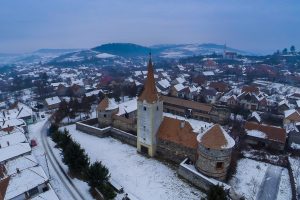 The Sükösd-Bethlen Castle is in a semi-ruinous state, some of its parts are in precarious condition, therefore it can be visited only from the outside. Upon request, the inner garden of the castle can be visited as well.
The Sükösd-Bethlen Castle is in a semi-ruinous state, some of its parts are in precarious condition, therefore it can be visited only from the outside. Upon request, the inner garden of the castle can be visited as well. This wonderful two-storey, Eclectic castle (combining Neo-Baroque and Neo-Renaissance elements) got its today’s form at the end of 1980s. The constructions were commissioned by baron Béla Szentkereszty. The castle is surrounded by a beautiful English park of over nine hectares. The main attraction of the park is the lake, which also houses a small bridge-accessible island.
This wonderful two-storey, Eclectic castle (combining Neo-Baroque and Neo-Renaissance elements) got its today’s form at the end of 1980s. The constructions were commissioned by baron Béla Szentkereszty. The castle is surrounded by a beautiful English park of over nine hectares. The main attraction of the park is the lake, which also houses a small bridge-accessible island.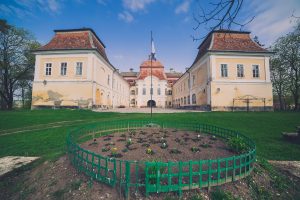 The Teleki Castle, one of the most beautiful Baroque castles in Transylvania, is surrounded by a spacious park of five hectares. The former Renaissance moat and ditch are still visible today, circling around the castle; elements of the old English park - the Ginko Biloba, Bald cypress, horse chestnuts, cigar-trees and many willow trees, oaks and plane trees - still decorate the garden after centuries. The castle can be visited daily from 10:00 to 18:00, guided tours are organized upon request.
The Teleki Castle, one of the most beautiful Baroque castles in Transylvania, is surrounded by a spacious park of five hectares. The former Renaissance moat and ditch are still visible today, circling around the castle; elements of the old English park - the Ginko Biloba, Bald cypress, horse chestnuts, cigar-trees and many willow trees, oaks and plane trees - still decorate the garden after centuries. The castle can be visited daily from 10:00 to 18:00, guided tours are organized upon request.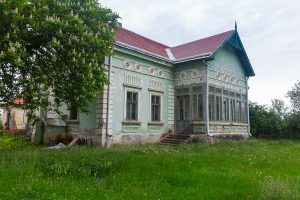
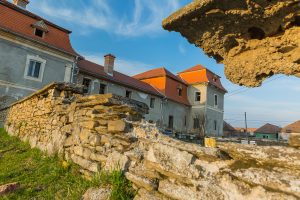 The most valuable part of the building is the main wing, constructed in the 17th century, with a special emphasis on the cross-vaulted chapel of the corner bastion, the cross-vaulted cellar, originally designed for protection purposes, and its huge baroque roof structure erected in the early 1800s. Currently, the castle is under renovation, and it is not open for visitors.
The most valuable part of the building is the main wing, constructed in the 17th century, with a special emphasis on the cross-vaulted chapel of the corner bastion, the cross-vaulted cellar, originally designed for protection purposes, and its huge baroque roof structure erected in the early 1800s. Currently, the castle is under renovation, and it is not open for visitors. Currently, the castle is in a semi-deteriorated condition, thus it is not open for visitors.
Currently, the castle is in a semi-deteriorated condition, thus it is not open for visitors.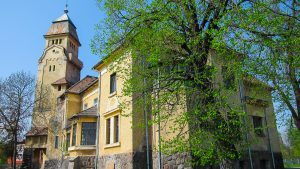 The Urmánczy Castle was built between 1903 and 1906 on a plateau of the Mureș River. It was built on the request of Jeromos Urmánczy, an Armenian landowner, and the building's architect was Virgilio Giacomuzzi, a Tyrolean architect. The style of the building combining the elements of the Art Nouveau with the features of the folk architecture related to the name of Kós Károly, is unique in the Transylvanian castle architecture. Currently, the castle does not have a function, but it can be visited upon request.
The Urmánczy Castle was built between 1903 and 1906 on a plateau of the Mureș River. It was built on the request of Jeromos Urmánczy, an Armenian landowner, and the building's architect was Virgilio Giacomuzzi, a Tyrolean architect. The style of the building combining the elements of the Art Nouveau with the features of the folk architecture related to the name of Kós Károly, is unique in the Transylvanian castle architecture. Currently, the castle does not have a function, but it can be visited upon request.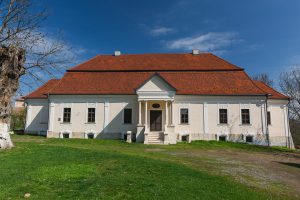 The history of the ensemble of buildings in Voivodeni, known under the name of Zichy Manor, is unknown, but its stylistic features suggest that we are dealing with a complex of edifices built in the 18th century or the first decades of the 19th century. Currently, the castle is under renovation.
The history of the ensemble of buildings in Voivodeni, known under the name of Zichy Manor, is unknown, but its stylistic features suggest that we are dealing with a complex of edifices built in the 18th century or the first decades of the 19th century. Currently, the castle is under renovation.


